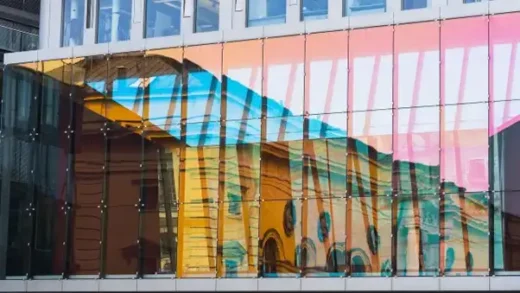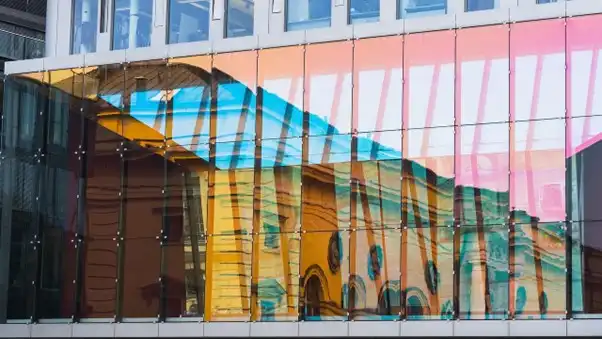Innovations in sustainable construction and architecture, cost of household appliances and furnishings, property interior design guide
October 18, 2025

The pursuit of sustainability in the construction and architecture sector has become more urgent in recent years. As environmental challenges such as climate change, resource depletion and habitat destruction threaten our planet, switching to sustainable building practices is no longer an option. It's a necessity. Innovations in materials, technologies and processes pave the way for green construction that minimizes environmental impact and improves the quality of living spaces.
Creation of environmentally friendly building materials
Green building materials play a crucial role in the sustainable architecture movement. Derived from sustainable sources, these materials provide functionality without compromising environmental integrity. Recycled steel and reclaimed wood are increasingly preferred for their aesthetic appeal and lower carbon footprint. By incorporating materials that either come from sustainable sources or are recycled, architects and builders can significantly reduce embodied energy in their projects.
One of these innovations is the emergence of sustainable wood suppliers who supply wood that is certified through various eco-labeling systems, ensuring that it has been harvested in an environmentally friendly manner. As Olam Agri experts explain, this supports reforestation efforts and helps preserve biodiversity. As strict regulations and verification processes become standard in the industry, trust in sustainable wood products is growing, positioning them positively in the market.
Smart building technologies
Technological advances in building management systems have redefined the way buildings are constructed and managed. Smart technologies use data analytics and machine learning to optimize energy consumption, reduce waste and optimize operational efficiency. Automated lighting and heating controls, when integrated into building design, can reduce energy consumption by up to 30%, significantly reducing operating costs.
The Internet of Things (IoT) enables real-time monitoring of energy consumption, enabling owners and managers to make informed decisions to improve building performance. Smart meters can track energy consumption patterns, helping to identify inefficiencies and guide necessary interventions. This systemic shift toward smart buildings marks a transformative step in sustainable architecture, where innovation meets functional design.
Environmentally friendly construction techniques
Using green construction techniques is critical to the pursuit of sustainability. Techniques such as modular construction and prefabrication reduce waste and minimize energy consumption in construction projects. These methods allow construction work to be carried out off-site in a controlled environment, resulting in greater efficiency and less waste of resources. The materials are precisely cut, which reduces residual waste and further improves resource optimization.
Techniques such as earth-protected building and green roofs contribute to energy efficiency. Earth-sheltered structures use the earth's natural insulation to maintain comfortable temperatures, while green roofs help regulate stormwater runoff, improve air quality and promote biodiversity. These methods illustrate how the architectural landscape evolves to harmonize with environmental contexts.
Passive design principles
By integrating passive design principles into architecture, a building's ecological impact can be drastically reduced. These principles include designing buildings that take advantage of the natural climate and site conditions, thereby minimizing reliance on mechanical heating, cooling and lighting systems. Aligning windows to capture seasonal sunlight, using thermal mass to retain heat, and strategically placing overhangs to block excessive sunlight are all techniques that contribute to passive design.
Buildings with large, south-facing windows can maximize solar gain in the winter while reducing heat in the summer months. Natural ventilation through thoughtfully positioned openings can improve indoor air quality and reduce humidity without mechanical assistance. The emphasis on passive solar design represents a strategic approach to creating energy efficient and comfortable living spaces.

Water conservation strategies
Water scarcity is another pressing issue that architects and developers need to address as part of sustainable planning. By implementing water saving strategies, water consumption in buildings can be significantly reduced. Innovative designs such as rainwater harvesting systems, gray water recycling and drought-resistant landscaping contribute to the responsible use of this precious resource.
Rainwater harvesting systems capture the water runoff during rain events, which can then be used for irrigation or, after appropriate treatment, even for indoor use. Likewise, gray water systems recycle wastewater from sinks and showers for non-potable uses. These proactive measures mitigate the challenges of water scarcity and promote a culture of sustainability among residents and broader communities.
Community and stakeholder engagement
Collaboration with communities and stakeholders is critical to promoting sustainable building initiatives. Understanding the local context, including cultural, environmental and social dimensions, allows architects and developers to create spaces that are consistent with community identity while promoting sustainability.
By involving local suppliers, craftsmen and residents early in the planning process, sustainability takes on a collaborative form and ensures that the results benefit everyone involved. One of the greatest benefits of community engagement is strengthening public support for sustainable initiatives. When community members see themselves reflected in projects, they are more likely to advocate for and invest in sustainable practices.
A change in policy and regulation can further support the growth of sustainable practices in the industry. By incentivizing sustainable materials and techniques, governments can encourage wider adoption and innovation in this sector. With sustainability at the forefront, the architecture and construction industries have the potential to lead by example and create spaces that are functional and harmonious with the surrounding environment.
Comments on this article on the “Innovations that advance sustainable building and architecture” guide are welcome.
sustainable building design
sustainable building items
Sustainable building design
Sustainable residential architecture in Abu Dhabi
Sustainable outdoor lighting
Real estate design
Contemporary Real Estate Designs – Current architecture selection:
house designs
Apartment designs
Housing
Interior design + architects
Comments/photos for the Innovations that advance sustainable construction and architecture Site welcome.
